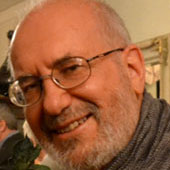Green Growth: How Cities Lead the Way
How are cities going green to improve their livability and their economic potential?
March 11, 2012
The debate over “how to green industry” remains locked into national and regional settings. However, it is really at the level of cities that progress is most likely to be achieved. Increasingly, the focus of efforts to green the current fossil-fuelled industrial system, as it relentlessly spreads around the globe, will have to focus at the city level for real solutions — both technological and financial.
Already there are several outstanding examples of industrial cities that have transformed from fossil-fuelled nightmares into clean — and green — exponents of a new way forward.
Take Ulsan, the second-largest city of Korea and the country’s major industrial center. When he turned the sod for this first of Korea’s new “industrial parks” in 1962, Korea’s then-president, Park Chung-hee, declared that only when the sky over Ulsan was black with industrial smoke, and the air was ringing with the sound of hammers on metal, would Korea throw off its centuries of poverty.
Within a few decades of the creation of petrochemical, automotive and shipbuilding complexes at Ulsan, Korea did indeed attain the status of a newly developed economy. But it did so at a frightful cost to Ulsan itself. Environmental contamination of soil, water and air reached catastrophic levels, and the Taehwa River became an open industrial sewer.
A decade ago, in 2002, a new city administration took office. It pledged to regenerate Ulsan and turn it into an “eco-industrial park.” Industrial complexes would share resources and energy, reducing overall resource and energy throughput. So far, their efforts to reframe linkages between firms have shown substantial progress, and the Taehwa River is emerging as a symbol for the newly regenerated city.
This story was told by the former vice mayor of Ulsan, Dr. Joo Bong-hyeon, at the February 2012 gathering of urbanists, economists and policy officials at the Greening Urban Growth symposium, staged in Penang, in Malaysia, by the Growth Dialogue, in conjunction with ThinkCity. ThinkCity is an arm of Malaysia’s sovereign wealth fund and investment agency, Khazanah Nasional, and its focus is on regenerating Georgetown, the colonial heart of Penang.
Other cities to tell their stories of eco-industrial regeneration included Ahmedabad, India, and Portland, Oregon. An elected council member of Portland Metro told a fascinating story of how that city had been moving relentlessly towards the urban uniformity and drabness of so much suburban development in the United States. A reversal of the process began in the 1990s, led by the state’s agricultural and timber industries. They were not happy at seeing their livelihood disappearing under asphalt. This led to an urban regeneration that now boasts a new “green” Portland, new human-scale transport systems, and a general air of cultural revival.
“Diamonds,” green technology and urban recycling
These examples are emblematic of a growing global trend that seeks to reverse the environmental degradation of cities. Fossil-fuelled industrialization is out. “In” is the recovery of both the economic potential of cities through the creation of new green industries — and the livability and potential of cities through the regeneration of green precincts.
The symposium was enlivened by presentations from “urbanists” such as Professor Alfonso Vegara, founder of Fundacion Metropoli, and leader of urban redesign efforts in his native Spain and in Southeast Asia. Dr. Vegara sees cities as connected in patterns he describes as “diamonds” of spatial linkages — illustrated by the diamond that links the southern European cities of Lisbon, Madrid, Barcelona, Marseilles and Milan, or the diamond linking Singapore to the Malaysian industrial clusters of Iskander Malaysia, Kuala Lumpur and Penang.
This latter diamond brings Singapore into a fruitful relationship with Malaysia, particularly with Iskander Malaysia on the southern tip of the Malay Peninsula. It provides a way to triple the land area of Singapore and extend its model of administrative guidance into the heartland of Malaysia. All these visions of new linkages provide opportunities for greening that were ignored or overlooked during the phase of fossil-fuelled industrialization.
Perhaps the highlight of the symposium was the account of a new green technology for urban recycling that has emerged in China. This is a process for recycling the solid waste of cities and turning its organic content into fertilizer. It also turns inorganic materials like plastics into pellets that are then available for recycling through manufacturing.
If there were a Nobel Prize for technological breakthroughs, this would surely be a candidate. It is the brainchild of Dr Zheng Shunchao, whose company, Zizhao Environmental Protection Development, is building modular solid waste recycling (SWR) plants throughout China.
After decades of depending on non-solutions like landfills and incineration, here is finally a closed system that recycles everything, promptly, and without odor or discharge. Dr. Zheng describes the system as an “industrial stomach” that digests the materials in under four hours, day after day, in modular units that can handle 200,000 tons of waste per day. Thus, out of China has come a technological breakthrough of the first order.
The Growth Dialogue has done the world a service in mounting this important initiative. But it is significant that it has done so in partnership with Khazanah Nasional, the Malaysian investment agency. As big industrial centers like Penang and Ulsan take charge of the urban greening agenda, they are likely to utilize their country’s sovereign wealth funds and investment agencies as the tools for transforming the current fossil-fuelled industrial model.
Takeaways
In 1962, then-President Park Chung-hee declared that Korea would not throw off its centuries of poverty until the sky over Ulsan was black with industrial smoke.
Fossil-fuelled industrialization is out. "In" is the recovery of the economic potential and livability of cities through the creation of new green industries.
